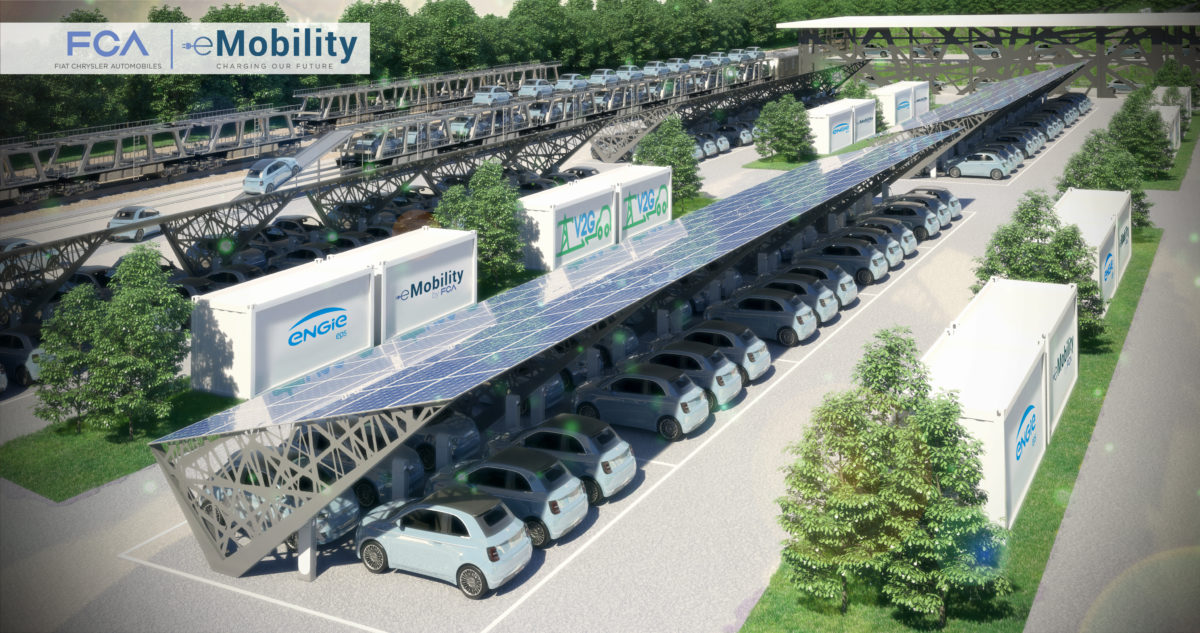With gigawatts of batteries on wheels expected to enter electricity markets around the world this decade, much ink has been spilt debating the theoretical benefits of V2G technology. While it has been around for over a decade, the sector has been struggling to identify a viable commercial model and make V2G attractive for EV owners reluctant to cede control of their vehicles.
However, numerous analyses and trials have shown that a two-way flow of electricity from EV batteries could deliver substantial opportunities for both soaking up excess renewables generation and releasing electricity back into the grid to manage issues in real time. And now a new research paper adds further evidence of the technology's potential.
According researchers from the Institute of Environmental Sciences (CML), Leiden University, in the Netherlands, and the US Department of Energy's National Renewable Energy Laboratory (NREL), EV batteries alone could be used to satisfy short-term grid storage demand across most regions by as early as 2030.
In their assessment, the researchers considered both EV batteries in the vehicles that can be used via V2G and after the end of vehicle life, when they are removed and used in stationary storage. They estimated a total technical capacity of 32-62 TWh by 2050.
“This is significantly higher than the 3.4 TWh to 19.2 TWh required by 2050 in [International Renewable Energy Agency] and Storage lab scenarios,” said the paper.
Popular content
In addition to quantifying the global EV battery capacity available for grid storage using an integrated model incorporating future EV battery deployment, the researchers also factored in battery degradation and market participation which for V2G may vary regionally depending on future market incentives and infrastructure, along with other factors.
Their focus was on the main EV battery markets of China, India, the European Union, and the United States, and what was called the “Rest of the World region.” In what they describe as conservative estimates, the researchers assess that low V2G participation rates of just 12% to 43% are needed to provide short-term grid storage demand globally without any second-use batteries in stationary storage.
If it is assumed that only half of second-use batteries are used on the grid, the required participation rate of V2G drops to below 10%, the researchers found. They discussed their findings in “Electric vehicle batteries alone could satisfy short-term grid storage demand by as early as 2030”, which was recently published in Nature Communications.
This content is protected by copyright and may not be reused. If you want to cooperate with us and would like to reuse some of our content, please contact: editors@pv-magazine.com.



Our most over-looked & under-utilized, but rapidly exploitable renewable energy resource is parking lots. This is why France has adopted an energy policy requiring solar canopies with integrated storage & V2G chargers on ALL existing parking lots with 80 or more spaces within 5 years, and within 3 years for large lots with hundreds of spaces. CA State Senator Josh Becker has introduced a similar incentive policy in State SB 49 legislation.
Reduce utility bills and transportation costs for tenants of leased commercial property, like large apartment & condominium developments, neighborhood shopping centers, business parks & public facilities. Produce & store reliable power right where most energy is consumed. Shade enormous asphalt heat islands. And accomplish all this without requiring expensive new long distance utility transmission. Widely distributed, reliable local neighborhood power production & storage instead of remote, unreliable utility monopoly power.